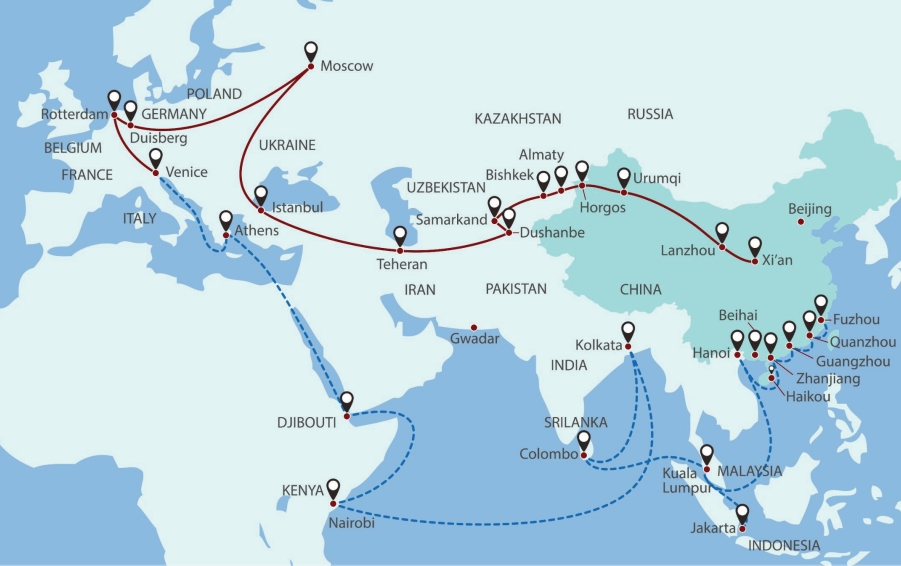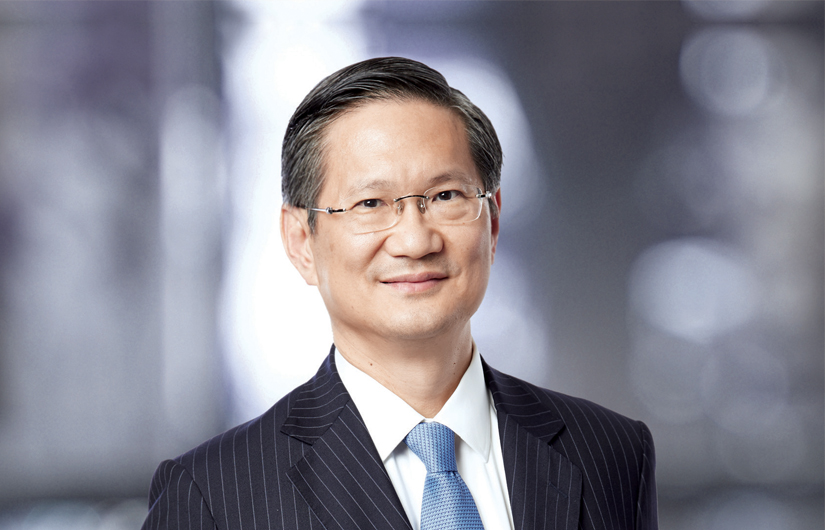The following article is based on a speech by Mr Chartsiri Sophonpanich, president of Bangkok Bank PCL, presented at the annual Assumption Alumni Event on Saturday, 26 November 2022
Few people would have imagined back in 2019 what we have seen over the past three years, and now who can imagine what the next three years will bring?
Hope is not enough for the past turbulence to pass and our lives return to post-pandemic normal. Every one of us must strive in our personal tasks, whether it be in our jobs, the businesses we need to run, the families we must support and the dreams we all want to fulfil. And to do this, we must prepare ourselves.
Times of Change
Let me begin by giving you some of my thoughts about what I think might be coming and what we can do to prepare by providing a brief overview of where I think we are today. The global economy is facing a perfect storm with geopolitical tensions disrupting supply chains, skyrocketing energy and food prices, rising interest rates, wild swings in currencies and predictions of a global economic downturn.
We have found that global value chains can be very fragile. We saw this when Covid lockdowns shuttered factories and production centres and disrupted distribution of shipping containers. After Russia’s invasion of Ukraine, we have been faced with disrupted supplies of oil and gas, fertilisers, wheat and commodities with the consequences affecting the rises in inflation here, in the region and around the globe.
With Thailand’s flooding, we saw the effects of climate change first hand and were reminded of the damage that natural disasters and changes in weather patterns can do. And now we have come to realize that globalization itself is under threat – as geopolitical conflicts are spilling over into our business relationships and the world is breaking into blocs. We are now once more a multi-polar world with the major powers forcing other, small countries to take sides.
So, Thailand needs to increase our focus on building value chains which are robust and resilient at both the local and regional level. This is a pragmatic and more secure approach to ensure we have access to food, energy and other essential commodities, and we need to have logistics, trade and settlement systems that support this.
At the intergovernmental and public levels, there are various initiatives taking place, for example, the BOT - Bank of Thailand’s work to build a regional payments system and the efforts being made to harmonize our trade systems in the region.
The business sector also has its role to play. It needs to develop technological solutions, such as distributed manufacturing that reduces the need for centralized manufacturing in favour of more localized solutions, 3D printing, cloud manufacturing and other advanced manufacturing technologies combined with the Internet of Things. These will enable global companies to produce products more rapidly at the local level.
In the financial sector, we also have our work to do – Bangkok Bank, for example, is working with customers, other banks and logistics companies to develop a new trade finance system using the Contour Enterprise Blockchain. We are also collaborating with partner banks to build new regional global payments rails that can provide real-time frictionless payments systems.
ASEAN as a Harbor in the Storm
We also need to think about where our interests lie and concentrate on advancing these. I believe that ASEAN can provide a safe harbor in the global storm as most economies in our region are recovering and growing whereas, in other parts of the world, economies are spiraling down. For example, the IMF – International Monetary Fund – is projecting the 2023 combined economic growth of ASEAN’s five largest economies to be 4.9%, well above the global average of 2.7%. With its sizeable market of 650 million, expanding connectivity and financial interoperability, ASEAN will become an increasingly significant trade and investment hub as it remains on track to become the world’s fourth largest economy by 2030.
Two important factors will further strengthen ASEAN’s growth – one is connectivity. Massive investment is taking place in roads, rails and ports as part of China’s Belt and Road Initiative. The second important development is the RCEP – Regional Comprehensive Economic Partnership, which went live at the beginning of this year. This brings together Thailand and 14 other countries, including all ASEAN member states, China, Japan, South Korea, Australia and New Zealand. It will be the largest free trade bloc in the world. The agreement covers 30% of the world’s population, which contributes about 30% to the global GDP and accounts for over a quarter of global trade in goods and services. In addition, it is attracting as much as 31% of global FDI – Foreign Direct Investment inflows.
The RCEP covers economic liberalization, trade in services and investment and other areas of cooperation with the aim to link the economies of member countries. Overall, the RCEP will cut 91% percent of tariffs among participating countries. Many of these cuts will occur immediately, in the agreement’s first phase, while others will be gradually introduced over a span of up to 20 years. Already, in the first few months we are seeing some impressive statistics.
In January of this year, Thai exporters sought certificates of country of origin for RCEP transaction worth 277.84 million baht. Within February, this figure had risen to 887.67 million baht, an increase of more than 300%. Japan was the top destination for RCEP-certified Thai exports in terms of value, followed by China and South Korea respectively. Most of the exported goods were canned fish, canned vegetables and textiles.
In the first quarter of this year, China's imports and exports to ASEAN reached USD 202.2 billion, an increase of about 8% year-on-year and accounting for approximately 14% of China's total foreign trade.
Vietnam is among the ASEAN members that will benefit the most from the RCEP, according to the World Bank, which said that the average trade-weighted tariff imposed by Vietnam should decline from 0.8% to 0.2%. In the most optimistic scenario, Vietnam's income levels may increase by almost 5% because of RCEP, compared to other ASEAN countries where the income level is likely to increase by 2.5% on average.
As for Indonesia, this country will benefit from the RCEP in at least three ways: lower tariff rates for their exports, better access to cheaper or better-quality inputs for making their products and a more open, more transparent business environment for trade in goods, services, investment and movement of people. This will help improve Indonesian companies’ competitiveness.

APEC and Other Regional Summits – What They Mean for Thailand
We have just ended three important regional events: the ASEAN summit in Cambodia, the G20 summit in Indonesia and the APEC summit in Thailand. I joined the APEC CEO meeting and Bloomberg meetings associated with the Thailand summit, which provided me with an excellent opportunity to see and hear from many leaders.
I listened to talks by President Marcos of the Philippines, President Nguyen Xuan Phuc of Vietnam and President Macron of France and. President Marcos is very pro-business. He is thinking about how to transform his country and attract investors to come to his country. His forward thinking is not unlike Dr Somkid’s. President Nguyen Xuan Phuc thinks much the same and expressed how determined he and is government is to move the country forward.
President Macron was invited as a guest even though France, as a European country, is not a member of APEC. Still, while his thinking is different from that of the United States, he still wants France and ASEAN to develop a framework for cooperation and collaboration between his country and the regional grouping,
I also met with the Hong Kong Commerce Secretary, Algernon Yau. Hong Kong is now competing with Singapore and so, it is opening up and anxious to do business with foreign entities. They want to be collaborative and serve as a gateway to the GBA - Greater Bay Area that comprises Hong Kong and Guangdong, often described as a megalopolis comprising nine cities and two special administrative regions in South China. Thailand is positioning ourselves as close to Hong Kong and a regional hub and gateway to ASEAN.
So, from these discussions and meetings, a clear, positive message was emerging that ASEAN is the place to be. However, it is also clear that Thailand needs to work hard to compete with our neighbours. Every other country in the region is moving forward with very strong leadership from the top down. They are open to change and globalization, and we are seeing foreign direct investment pouring into countries like Vietnam, Indonesia and the Philippines. For example, FDI in Vietnam reached USD 18.75 billion in the first nine months of this year, up 15.3% year on year.
We, here in Thailand, need to forward and collaborate more with foreign investors. We need to open up the country more, introduce more advanced technology and expand our global access.
We need to ensure we keep up with the global trends, for example, in ESG – environmental social and corporate governance, transparency and fairness, global standards, and now more than ever, climate change. While the BCG - Bio-Circular-Green Economic Model the Government is promoting, is a very good concept, we must still figure out how we can work together to put this into action.
We cannot stick to the easy-going Thai style, but we must become proactive; we have to change! We can’t miss this continually speeding up train. We must once more commit to the Assumption motto – “Labor Omnia Vincit” – hard work will bring you success. We should all remember these words and keep them close to our hearts.
I am confident the future of Thailand and ASEAN can be bright if we work hard to make it so.






















































































































































































































































































































































































































































































































































































































































































































































































































